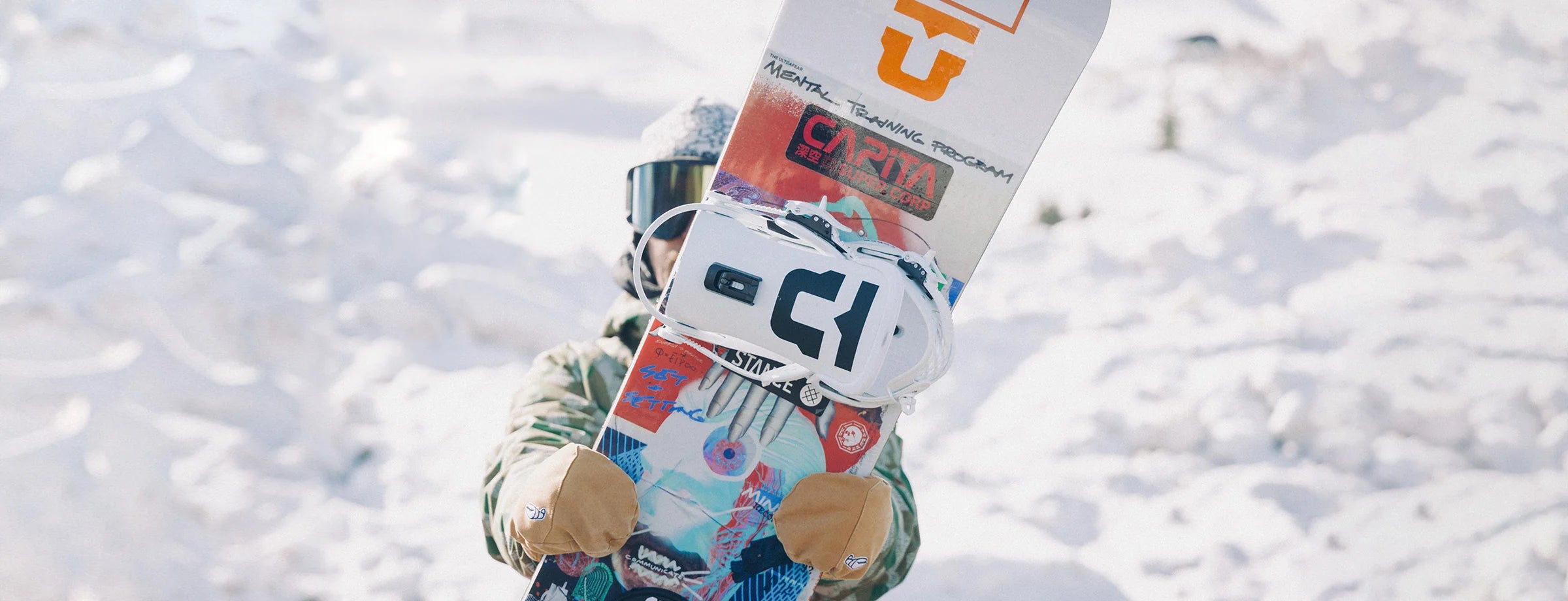Choosing your first skateboard can feel like picking a needle in a haystack, but it doesn’t have to. At Switch Skate & Snow, we see tons of beginners asking one core question: What size skateboard should I get?
In this guide, we’ll walk you step by step through everything that matters: height, shoe size, skating style, trucks, wheels, and more, so you end up with a setup that feels right under your feet.
Whether you’re searching “what size skateboard should I get near me” or just diving into your first board, this article is for you!
Let’s roll.
Whether you want to start with a complete deck or build your own, we're gonna take care of you either way! Get FREE grip-tape installation at SWITCH at our shop.
Follow us on Instagram to find exclusive deals.
Switch Skate & Snow:
1. Why Board Size Matters (Don’t Skip This Part)

When we were learning to skate, we picked a random deck because it looked cool, and we would pay for it, do some awkward landings and find it difficult with turning.
The size of a skateboard affects balance, control, trick potential, and comfort. A board that’s too wide feels heavy and sluggish.
One that’s too narrow feels unstable, especially for bigger riders.
In short:
-
Too narrow = hard to balance, edges can feel twitchy
-
Too wide = harder to flip, carry, or maneuver
-
Good match = natural stance, easier tricks, more fun
So before you buy, spend the 5 minutes to size well. Your body and future self will thank you. We also recommend looking at some skate shoes as well.
2. Key Factors to Decide Skateboard Size
There are four main factors we consider whenever we help someone pick a board size:
-
Your height and weight/body proportions
-
Style of skateboarding (street, transition, cruising, etc.)
Let’s break each down.
2.1 Height, Weight & Body Proportions
Your height and weight give a baseline for what width feels comfortable.
For example:
-
Riders under ~5′6″ often lean toward decks in the 7.5″ to 8.0″ range
-
Taller riders or those with more body mass often prefer 8.0″ to 8.5″+ wide decks
We recommend 7.0″–7.5″ for youth, 7.5″–8.0″ for mid‑size riders, 8.0″–8.5″ for general use, and 8.5″+ for transition, pools, or cruisers.
Also, if you carry more weight, wider decks distribute load better, making them more stable underfoot.
2.2 Shoe Size
This is one of the most overlooked, but also among the most reliable guides. Your foot should feel centered on the deck, not hanging off, not too far from the edge.
A rough rule:
-
Shoe sizes around Men’s 6–9 (women’s smaller ranges) → deck ~ 7.5″–8.0″
-
Shoe sizes above ~9.5 → deck ~ 8.0″–8.5″ or more
If your entire foot can’t even touch the edges, the deck might be too wide. If it overhangs a lot, the deck is too narrow.
Review our top skate shoes at SWITCH.
2.3 Skate Style / Terrain
What you intend to do with the board heavily affects ideal size:
-
Street / technical tricks (stairs, ledges, rails): narrower, more responsive setups (7.5″–8.0″)
-
Park / transition / bowls / vert: wider decks (8.0″–8.5″+), more stability
-
Cruising / commuting: could lean wider, or even move to cruiser/longboard styles
If you skate vert or transition, you'd often go a bit wider; if you’re all about flip tricks, a narrower board gives you more agility.
2.4 Parts: Trucks, Wheels & Wheelbase
Your board doesn’t exist in isolation; you’ve got to match trucks, wheels, and the wheelbase to your deck width:
-
Trucks: Axle width should match deck width. E.g. 8.0″ deck pairs with ~8.0″ trucks.
-
Wheels: For street/park, 52–54 mm is common; for cruising/speed, 55–57+ mm. Our shop’s buying guide confirms that 52–54 mm is a safe default.
-
Wheelbase: The distance between your trucks affects the turning radius. Shorter bases = tighter turns; longer = more stability at speed.
So the choice of deck width cascades through the rest of your setup.
3. Deck Width & Length: Common Ranges
Let us walk you through typical deck sizes you’ll see and what they suit.
| Deck Width | Typical Length / Use Case | Best For |
|---|---|---|
| 7.0″–7.5″ | ~29″ to 31″ | Young riders, very nimble street setups |
| 7.5″–8.0″ | ~31″ | Most beginner / all‑round use |
| 8.0″–8.5″ | ~31″–32″ | Street, park, transition, good balance |
| 8.5″+ | 32″+ | Transition, bowls, cruiser / big riders |
For example:
-
7.25″ → length ~ 29.50″
-
7.50″ → 31.12″
-
8.00″ → 31.38″
-
8.25″ → 32.00″
It’s helpful to picture width like shoe widths: a little difference (0.25″) makes a noticeable impact underfoot.
4. A Step‑by‑Step Checklist: What Size Skateboard Should You Get?
Think of this as a “choose your board” recipe.
-
Measure your shoe width (across ball of foot).
-
Check your normal clothing + stance width.
-
Decide your main skating style (street, park, cruising).
-
Look at the deck width chart above that matches your shoe/height.
-
Match trucks and wheels accordingly.
-
Test center balance: your foot should land near the center—not too edge.
-
If in doubt, start conservative (mid widths) and experiment later.
If you find “8.0″” in multiple lists and your shoe size is near 9 or 10, chances are that’s your safe bet.
5. Sample Recommendations Based On Real Cases
Here are some example scenarios to help you visualize:
-
A 5′2″ teen, shoe size 7–8: ~7.75″ deck
-
A 5′10″ adult, shoe size 9: ~8.0″ or 8.125″
-
A 6′4″ tall rider, shoe size 11–12: ~8.5″ or more
-
Street-focused trickster: lean toward narrower (7.75″–8.0″)
-
Vert/transition passionate: go wider (8.25″+)
If someone tells you “pick what feels best,” that’s partly true, but feel evolves once you ride more. Start in the zone above and adjust with experience.
6. Building Your Complete Setup (Don’t Mismatch Parts)
Getting the right deck width is just half the battle; you’ve got to tune the rest right.
6.1 Trucks
Choose trucks whose axle width roughly matches your deck. For example, a 7.75″ deck works with 7.75″ trucks. Tactics’ guide outlines the matching ranges clearly.
6.2 Wheels
-
52–54 mm: ideal for street and park
-
55–56 mm: good balance for street + speed
-
57 mm+: cruising, speed runs, larger boards
Our own Switch Skate & Snow guide mentions 52–54 mm as “most common,” 55–56 mm for extra speed, and 57 mm+ for cruising setups.
Use riser pads if necessary to prevent wheel bite when you go larger.
6.3 Wheelbase & Concave
-
Short wheelbase = snappier turns
-
Long wheelbase = stability at speed
-
Concavity = curvature across width: deeper concave helps tricks; flatter is more forgiving
Concavity and wheelbase aren’t fixed across all models, so as you progress you’ll notice what you prefer.
7. Local Buying Tips: Finding the Right Size Skateboard Near Me
-
Visit local skate shops (like ours!) and stand on decks to see how each width feels under your feet.
-
Ask to demo or try setups before purchase.
-
Choose shops that can help you switch trucks/wheels if sizing is off.
-
Because of weather and shipping sometimes, local shops often carry popular decks (7.75″, 8.0″, 8.25″) more than exotic ones.
If your ever near our shop, Switch Skate & Snow, drop in, we’ll help you try a few widths right there, side by side.
8. Mistakes Beginners Make (So You Can Avoid Them)
Avoid these common mistakes as a beginner:
-
Picking a board just because of graphics (bad match underneath)
-
Going too narrow to feel “cool”
-
Going too wide, thinking “bigger is better”
-
Ignoring shoe size when choosing width
-
Mismatching trucks or wheels that don’t suit the deck
We’ve seen boards gathering dust because the rider regretted mismatches early on. Do the sizing right first, so the board becomes your tool, not a regret.
9. How to Adjust After You Buy
Once you have your board:
-
Ride it a bit before judging. Often, “feels weird” fades after a few sessions.
-
Try shifting foot placement slightly.
-
Swap in slightly narrower or wider wheels/trucks to fine-tune.
-
When you upgrade, use your first deck as spare or experiment with it.
Your ideal size might evolve as your skill grows, don’t treat it as set in stone.
Summary & Quick Reference
-
Match shoe size, height, and style to find a good deck width band.
-
Use 7.5″–8.0″ for many beginners, 8.0″–8.5″+ for bigger or transition riders.
-
Always keep truck, wheel, wheelbase compatibility in mind.
-
Try boards in person if possible.
-
Adjust as you ride.
So when someone nearby asks, “What size skateboard should I get near me?” you’ll be ready to answer them confidently, and or send them over our guide right here.
Conclusion
Finding the right skateboard size is more science than guesswork. While it may feel overwhelming at first, once you know your shoe size, height, and riding style, and match trucks and wheels properly, you’ll land near your ideal deck. Then, all that’s left is riding and tweaking. Whether you're in Ajax, Toronto, or anywhere in Ontario, the right size board makes your early sessions more fun and less frustrating, so stop by at SWITCH, and let us take care of everything on site or simply contact for more information anytime! We're always happy to help!
FAQs
1. Can I use a skateboard that’s slightly too wide just for stability?
Yes, you can, but it'll feel heavy for flip tricks. A slightly wider board gives more foot room and stability but may compromise responsiveness. If your primary aim is cruising or learning, that’s okay; just don’t expect technical trick performance to be top.
2. Should I size up to “grow into” a larger board?
Not usually. If you oversize too much, the board may feel clunky now. It’s better to buy the right size now, and later, when your skill and size grow, upgrade with confidence.
3. Can I change the width later by swapping parts?
You can adjust trucks and wheels a bit, but the deck width is fixed. You cannot change the fundamental width, so pick the deck size carefully once.
4. Do I need a very exact width, or is a range okay?
A range is fine. If your ideal is 8.0″ and you get 7.875″ or 8.125″, that’s okay. The fit should feel natural underfoot, not extreme.
5. What size should a kid (age ~10) use?
By about age 10, many kids transition into mid‑size ranges (7.5″–7.75″ or even 8.0″) as they grow. We often size a little larger so the board lasts longer, as long as it doesn’t feel unwieldy


